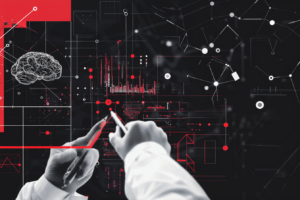Data Entry Nightmares
Think back to those days when Salesforce was the backbone of your customer relationship management. It was powerful, but only if your team had the patience for manual data entry. Information had to be input one touchpoint at a time, and syncing data across platforms was anything but automatic. Misaligned customer profiles were common, and updating contact details or tracking interactions often involved combing through spreadsheets or sifting through dozens of emails. The CRM provided visibility, but every bit of insight felt like it came with hours of grunt work.
Segmentation Struggles
Back in 2014, running email campaigns on platforms like Eloqua was complex, even for experienced marketers. While automation was possible, segmentation involved pulling data from multiple disconnected sources, which required a lot of manual effort. Integrating email automation with CRMs like Salesforce often resulted in sync errors, leading to delays in campaigns.
Dynamic content setup was cumbersome, requiring manual configurations for each audience segment. Testing workflows became time-consuming, involving back-and-forth between marketing and tech teams. True one-to-one personalization was theoretically possible, but the manual workload to achieve it made it feel out of reach, often delaying campaigns and pushing deadlines.
Post-Campaign Reports and Missed Opportunities
In 2014, running analytics often involved spending days in tools like Google Analytics, manually combing through traffic data and conversion rates after campaigns had already ended. Real-time insights were out of reach, and the process of gathering, cleaning, and analyzing data took so long that by the time marketers had a full view of performance, the chance to make meaningful adjustments had passed.
Beyond the lack of real-time insights, the manual effort was immense. Multiple dashboards tracked performance metrics, but these rarely told a cohesive story. Data had to be exported, cross-referenced with CRM or sales data, and manually processed into reports, resulting in fragmented insights. Campaigns were largely evaluated in hindsight, with marketers trying to piece together what worked—but with feedback loops so slow, missed opportunities were inevitable.
This lag made it difficult to adjust mid-campaign. A/B testing results came in too late to optimize variations effectively, leading to wasted budget on underperforming versions. For senior marketers, this delay was frustrating, forcing decisions based on outdated data and reducing campaign agility, ultimately impacting ROI.
Manual Workflows and Bottlenecks
In 2014, it wasn’t uncommon to see teams of marketers and analysts manually pulling data from one tool, cleaning it up, and importing it into another system. Each platform operated in isolation, and even the smallest campaign required coordinating between multiple teams. You had a tool for email marketing, another for customer management, one for analytics, and possibly more for social media. They didn’t integrate easily. Bottlenecks were common—waiting on data to sync, waiting for reports to be pulled, waiting on IT to troubleshoot broken connections. By the time everything was lined up, the marketing team would already be pivoting to the next campaign, leaving valuable insights on the table.
The Human Error Factor
Let’s not forget the margin for error. When your marketing stack relied so heavily on manual data entry and syncing between systems, human error was inevitable. A missed field here, a duplicated contact there—it was the norm. Misaligned data could mean sending the wrong message to the wrong person or failing to catch an opportunity for upselling. Mistakes weren’t just inconvenient; they could significantly impact campaign performance.
For marketers, much of the day-to-day was spent navigating these workarounds, managing relationships with tech teams, and constantly troubleshooting. Every step was a potential bottleneck, and the larger the campaign, the more teams had to jump through hoops just to get it off the ground.




